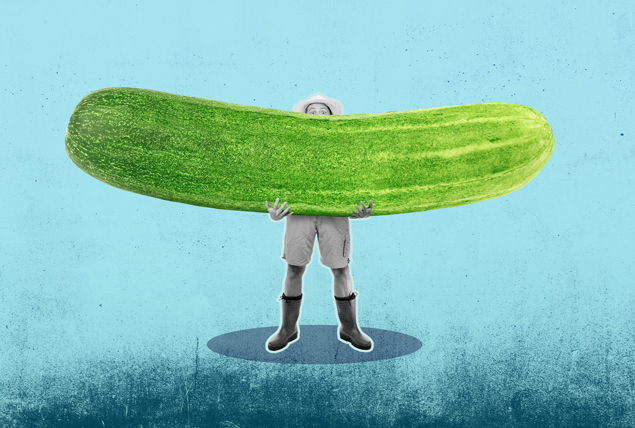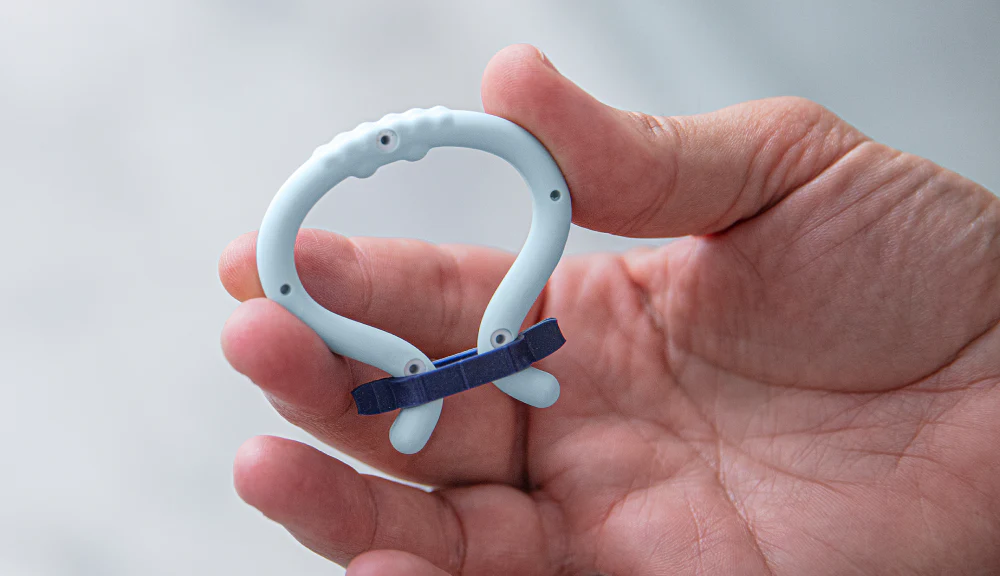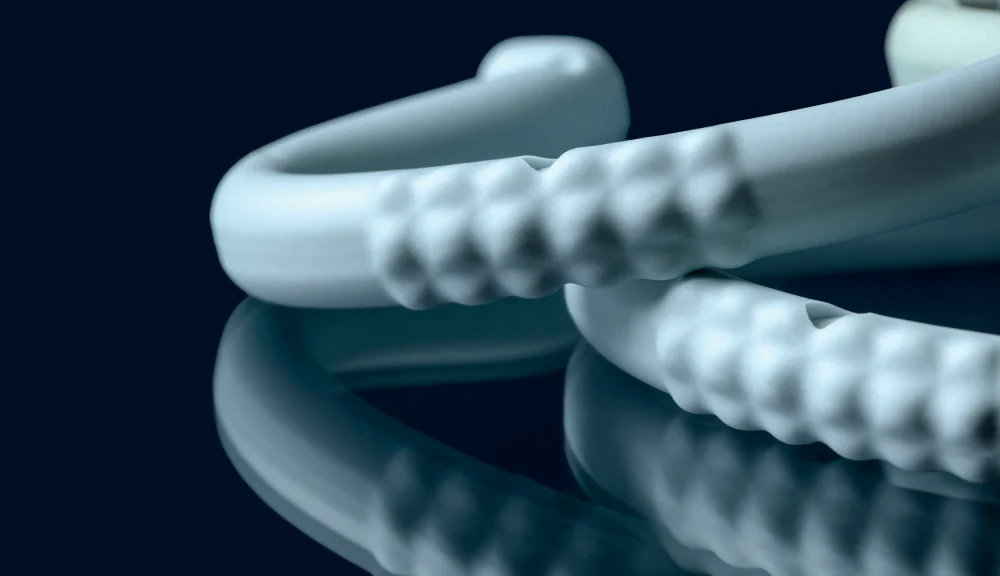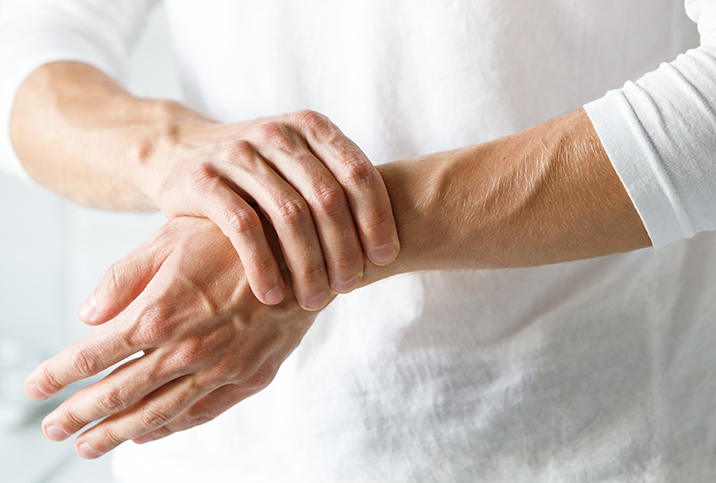AS and Its Effects on Sexual Function

When I returned to Southern California in August after visiting friends and family in Illinois, my neck hurt, a condition that emerged after I slept on a recliner for one night at my sister's house. This wasn't the first time. A chiropractor I visited when I was about 18 explained that I suffered from "military neck," which would likely cause arthritis in a few years.
For the past 10 years or so, since my mid- to late 20s, I've experienced bouts of swollen joints and tissues, as well as whole-body stiffness. Symptoms worsened after I moved to SoCal a few months before I turned 30. While working at Ralphs grocery store, teaching at a local university and making major edits to my doctoral dissertation, my feet swelled up and stayed that way for a while. I experienced gout-like symptoms and developed a hallux valgus—or bunion-like—deformity in my right foot, which may or may not be relevant.
In the spring/summer of 2020, following a respiratory infection and pneumonia, a long-lasting flare affected both knees. Jumping up a small step became painful, though my knee joints are better now. I dealt with iritis, inflammation of the outer eye, and possibly uveitis, a swelling of the eye associated with a condition I've been diagnosed with recently.
Chronic inflammation accelerated. When my rheumatologist at the Kaiser Permanente location in Riverside, California, ordered lab tests in September 2020, my erythrocyte sedimentation rate (ESR)—the rate at which red blood cells, or erythrocytes, in a blood sample fall to the bottom of a tube—clocked in at 85 millimeters in one hour. Normal levels for men tend to range from 0 to 22. C-reactive protein, another inflammatory marker, which should register at 7.4 milligrams per liter or less, totaled a whopping 90.3 when the blood test came back.
My body bested that score a few months ago in the wake of worsening symptoms.
When the neck pain I acquired on my trip to the Midwest persisted for more than a week, I visited a local chiropractor and learned I had a partial fusion of some cervical vertebrae.
Later, another chiropractic doctor asked me if I had ever been diagnosed with ankylosing spondylitis (AS), a condition with which I wasn't familiar.
A primer on AS
An autoimmune disease and form of spondyloarthropathy, AS tends to affect men more than women and can come with sexual dysfunction. A fairly rare disease characterized by chronic inflammation, it affects the spine as well as sacroiliac joints, sometimes causing immobilizing calcification and ossification of soft tissues such as ligaments and disks. In severe cases, AS can lead to "bamboo spine"—a complication that's caused by the widespread fusing of bones in the spine—and possibly even to fatal spinal fractures of one form or another in response to relatively low-impact forces.
The onset of ankylosing spondylitis, often, though not always, occurs in early adulthood, and symptoms frequently appear years prior to diagnosis.
"I was lucky because I was diagnosed at the age of 12," said Jed Finley, founder of the Living With Ankylosing Spondylitis Facebook group and frequent contributor to AnkylosingSpondylitis.net. "My symptoms of cracking knees and ankles and a sore back started in the winter of 1993. I was an athlete and I knew what those pains felt like, and this was so much more than I was used to."
Unhelpful explanations from doctors—including, "Well, you're getting older!"—didn't apply, so AS was probably the culprit, explained Finley, whose first symptoms were followed by general stiffness and not being able to touch his toes.
"The unfortunate part was, at the time, there wasn't much they could do for someone so young, so I did a little bit of PT [physical therapy] and was told to try to forget about it," added Finley, who resides in St. Louis.
People who carry the HLA-B27 gene are more likely to develop the disease and that's especially true if they're men younger than the 40 to 45 age range. Although genetics, family history and age predispose a person to AS, the often debilitating illness remains idiopathic, or without a known cause.
Finley, who experienced increased pain and stiffness at age 22, tested positive for HLA-B27. He deals with pain in the neck and back, along with constant inflammation in those areas and in his hands.
The onset of ankylosing spondylitis, often, though not always, occurs in early adulthood, and symptoms frequently appear years prior to diagnosis.
"Doctors are now finding that the HLA-B27 gene is not the only cause for AS," he said. "There are others, like IL-17, that also can predispose someone for developing AS. Most people with the HLA-B27 gene never develop AS. However, something like 90 percent of people with AS have the gene."
I tested positive for the gene, and my rheumatologist at Kaiser Permanente and I spoke over the phone in October. A bridging of vertebrae and osteophytes showed up in the X-rays he ordered, and he could see degeneration of my hip and/or sacroiliac joint, which could explain the onset of pain when I sit for an extended period and/or the literal pain in the butt that's bothered me before.
I referenced the recurring, frustrating enthesitis—inflammation of areas where tendons and ligaments attach to the bone—affecting me in the form of arch (plantar fascia) discomfort along with heel- and Achilles-area swelling and pain. I could have also alluded to, as I did later, the bony growth on the back of my heel that seemed to develop around the time, and the regular, generalized foot swelling (often at night), as well as the sausage-digit dactylitis inflaming mostly my toes (and occasionally my finger joints, too)—all associated with AS.
More recently, I've experienced jaw pain and an odd creaking of the temporomandibular joint (TMJ) on the right side. Lower back pain is a major AS symptom, but I haven't experienced too much of it, though spasm-like pain in the muscles of my back that have come and gone could be germane to autoimmune spondyloarthritis, which my rheumatologist came around to diagnosing as ankylosing spondylitis.
"You can call it that," my doctor said in October. The doctor described an "ankylosing spondylitis-like pattern" at the time, but noted it's sort of "immaterial what you call it."
I completed a course of prednisone, combined with 7.5 to 15 mg of the nonsteroidal anti-inflammatory drug meloxicam daily and a once-weekly 15 mg dose of the drug methotrexate. During another phone appointment a month later, the doctor who prescribed all that affirmed my diagnosis.
"I think at this point we're going to call this ankylosing spondylitis," he said.
AS and sexual health
A study on the impact of AS on sexual relationships, published in 2009 in the journal Rheumatology, noted that AS has been linked to erectile dysfunction (ED).
"Sexual problems in AS may be associated with peripheral joint involvement, decreased function, greater disease activity, reduced health status more generally and depression," the study stated, citing a 2007 study of sexual problems in male AS patients.
The 2009 study found 38 percent of AS patients reported having sexual relationships affected "moderately," "quite a bit" or "extremely."
The researchers discovered no significant gender-based difference comparing males and females, but an analysis used to flesh out sexual impact factors showed that AS effects seemed to be psychologically and socially driven in males. The severity of the disease mattered for both men and women, but issues such as self-efficacy and depression appeared important for the males, far less so for the females.
Using the female sexual function index (FSFI), authors of a study published in 2015 in Archives of Rheumatology indicated that the 54 women with AS they observed reported greater pain and less arousal, desire, lubrication and satisfaction in relation to sex than the 56 women of similar age without AS involved in the study. The AS-afflicted women also reported higher levels of fatigue, which could be a factor in sexual enjoyment and function.
Pain, discomfort and feeling stiff are likely to make engaging in any physical activity, sexual or otherwise, less desirable and a low priority. This, I can personally assure you.
'Sexual problems in AS may be associated with peripheral joint involvement, decreased function, greater disease activity, reduced health status more generally and depression.'
Still, a study published in 2011 in the International Journal of Impotence Research comparing 43 males with AS to 43 disease-free males observed no differences in the frequency of sexual intercourse between the groups. But AS patients registered higher rates of depression and anxiety. Those with the disease also disclosed greater rates of diagnosed sexual dysfunction and higher incidences of premature ejaculation and erectile dysfunction.
In their discussion, the authors acknowledged "multifactorial" causes of sexual dysfunction in people with ankylosing spondylitis, owing to factors that can include disease-connected pain, related physical difficulties, concomitant emotional disturbances and associated problems in partnerships.
Concerning partnerships, authors of a study published in 2019 looked at the experiences of individuals with axial spondyloarthritis, which encompasses AS, and their partners. They noted a frequent reduction in or loss of intimacy due to symptoms.
One couple reported "not sharing the bed all the time" due to a partner's rheumatic condition.
"Sex life vanished quite early on," another person shared, adding that intercourse "isn't something which [the partner] can deal with," seeing as how "painkillers are not going to deal with that kind of stress on the body." Thus, "when it all became too painful," they both "just sort of quietly agreed that this is something to stop."
In another relationship, a partner with spinal curvature mentioned being "exhausted," "in a lot of pain" and "tetchy," and that person confessed an ensuing separation in addition to the other person having an affair. Another person alluded to AS overwhelming the relationship, with the partner declaring the disease shapes "absolutely everything from what we eat, to when we eat, to who does this, to who does that, to when this happens, can it happen?" and concluding that "everything is sort of gravitated to AS."
On the other hand, another person revealed a partnership bond had been "strengthened or forged" given the chronic issues compelling them to "be more supportive emotionally" and to "show that we care about each other a bit more than your average sort of bloke or woman."
Treating AS and regaining sexual function
The aforementioned anti-inflammatories can help with symptoms and sometimes stave off progression. My rheumatologist also prescribed a biologic, etanercept, a drug I could self-inject once per week. The drug is designed to help control the body's defensive response by blocking the action of a certain natural substance—tumor necrosis factor (TNF)—that is used by the immune system, so as to slow or stop the progression of disease and joint damage, resulting in improved daily functioning and quality of life, according to Kaiser Permanente.
Turning to other interventions, physical therapy provides benefits for some people. Physical activity and exercise, while not always easy to begin when you're stiff and/or in pain, often ease AS-related discomfort and elevate mood.
"I walk 12 to 15 miles a week when the weather is right and I feel like I can," Finley said. "Walking has been great for me; keeps my heart beating and my muscles loose. The problem is after a few walks, my feet start to hurt. Recently, walking has caused my symptoms to flare, combined with recent wet weather, which always leads to a flare."
I can relate to foot issues inflicted or aggravated by AS. Like Finley, I try to find ways to stay fit in a pain-free or pain-minimizing fashion.
Regarding food, Valter Longo, Ph.D., professor of gerontology and biological sciences and director of the Longevity Institute at the University of Southern California Leonard Davis School of Gerontology, said he and colleagues have been working on an "everyday diet" that could help with autoimmunities.
"We're not there yet," he said, but he thinks the basis will be what he describes in "The Longevity Diet," a book he published a few years ago. He also sees value in "elimination diets," wherein people typically remove potentially triggering foods from their diet and gradually add them back to try to figure out what substances seem to engender flares and symptoms.
Finley definitely thinks ankylosing spondylitis has food triggers, which he believes differ for each individual.
Longo, who has published papers on the role of nutrition in autoimmune diseases—including studies examining the potential use of fasting and fasting-mimicking diets as interventions—stressed that "complex problems do not have simple solutions." Effective approaches usually involve "personalization of the problem" and teams working together to understand how best to address what's occurring, he explained.
Longo offered a recommendation for how people with ankylosing spondylitis can seek solutions.
"The No. 1 solution would be to find a group, and you can certainly [consider] the Create Cures Foundation clinic in Los Angeles," Longo said, advising people who might self-identify or be described as AS "warriors." "You can do telemedicine. That's my recommendation. Find people that can help you. I'm not saying that people shouldn't feel self-empowered—absolutely, read and do all of it—but then find the team that really thinks differently. Not the usual team that tells you, 'Well, that's all we got. Go home,' but a team whose responsibility is to solve the problem. Not to just see you, and I'll see you again in six months. Their responsibility should be to solve the problem, right? And keep on digging until you solve it."


















